-
UNITED HEALTH CENTRE 2,ELLIOT ROAD, KOLKATA - 700016
UNITED HEALTH CENTRE 2,ELLIOT ROAD, KOLKATA - 700016
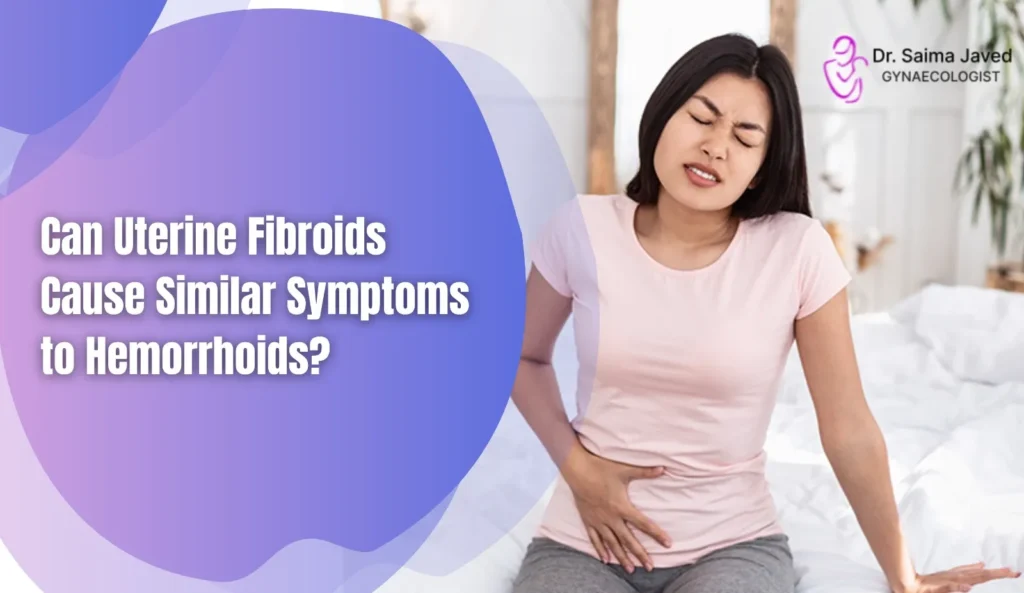
Hello Reader!
Welcome to the blog page of Dr. Saima Javed, the best lady gynecologist in Kolkata.
When patients experience pelvic discomfort, rectal pressure, or unusual bleeding, it can be confusing to determine the exact cause. Two conditions that can present with somewhat overlapping symptoms are uterine fibroids and hemorrhoids. While they are entirely different medical issues affecting separate parts of the body, the symptoms may sometimes appear similar, leading to misinterpretation and delayed treatment.
As the best lady gynecologist in Kolkata, I, Dr. Saima Javed, frequently encounter women who are unsure whether their symptoms point to a gynecological condition like fibroids or a gastrointestinal issue like hemorrhoids. Let’s explore both conditions and clarify their similarities and differences.
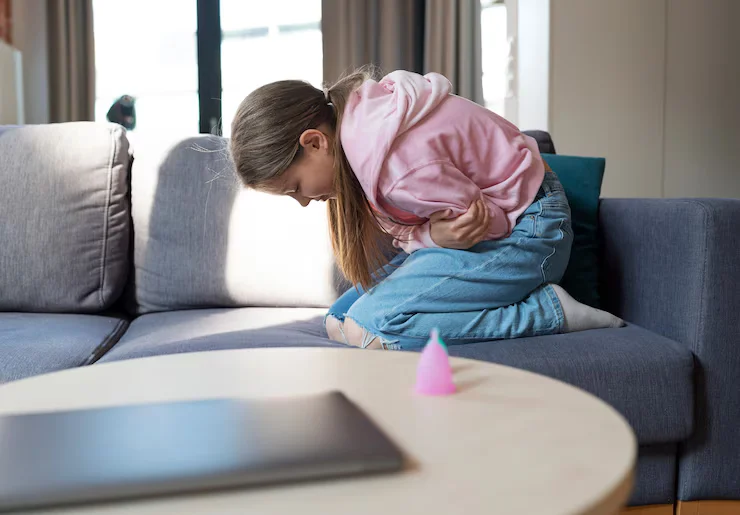
Uterine fibroids are non-cancerous growths that develop in or on the uterus. They are most common among women of reproductive age and can vary in size, number, and location within the uterus.
As the best lady gynecologist in Kolkata, I’ve seen cases where large fibroids press on nearby organs, such as the bladder or rectum, leading to complications that mimic other conditions.
Hemorrhoids, on the other hand, are swollen blood vessels in the rectal or anal area. They are caused by increased pressure due to constipation, pregnancy, or prolonged sitting.
Though uterine fibroids and hemorrhoids affect different systems, their symptoms may seem similar, especially when fibroids exert pressure on the rectum or lower digestive tract.
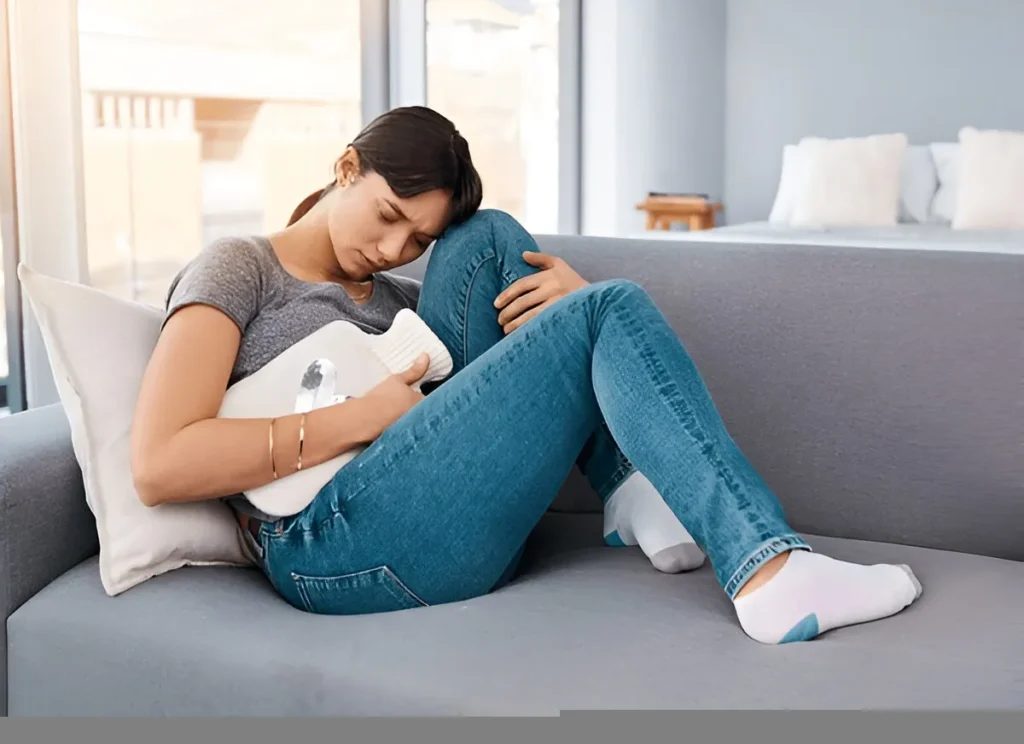
There are a few symptoms that can appear similar in both conditions:
| Feature | Uterine Fibroids | Hemorrhoids |
| Location | Uterus | Rectum/Anus |
| Bleeding Type | Heavy menstrual periods | Rectal bleeding with stool |
| Pressure Symptoms | Pelvic pressure, back pain | Anal discomfort, itching |
| Diagnosis | Pelvic ultrasound, MRI | Physical exam, anoscopy |
| Specialist | Gynecologist | Proctologist/Gastroenterologist |
As the best lady gynecologist in Kolkata, I always advise my patients not to self-diagnose. An expert evaluation is crucial to distinguish between these conditions and ensure timely treatment.
Also Read: How to Control Unhealthy Weight Gain Being a PCOS Patient?

While fibroids themselves don’t cause hemorrhoids, they can contribute indirectly. For example:
So, while they’re not directly related, one can influence the development of the other, especially during pregnancy or when fibroids grow significantly.
Consult a gynecologist if you experience:
As the best lady gynecologist in Kolkata, I recommend all women above 30 to undergo regular pelvic checkups and ultrasound screenings for early detection of uterine fibroids and other gynecological conditions.
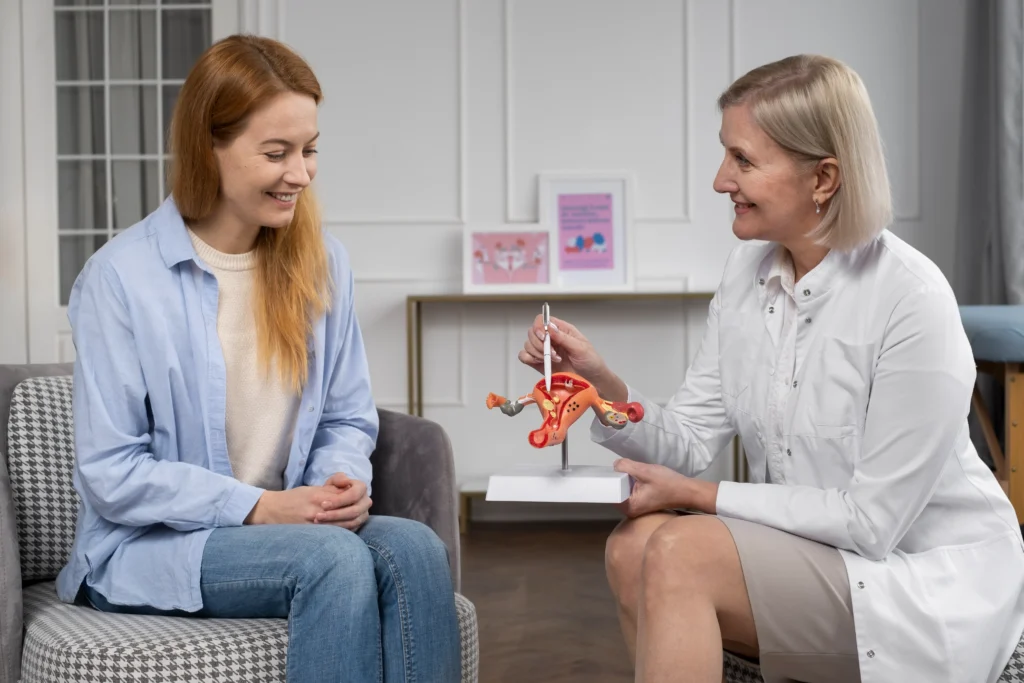
Patients with uterine fibroids may experience rectal pressure or constipation primarily due to the physical location and size of the fibroids. When fibroids develop toward the back of the uterus, they can press directly against the rectum or colon, which are situated just behind the uterus. This pressure can interfere with normal bowel movements, making it more difficult for stool to pass and resulting in symptoms such as constipation, straining, and a sensation of incomplete evacuation.
Larger fibroids are especially likely to cause these symptoms because they occupy more space within the pelvis, thereby increasing the likelihood of compressing adjacent organs, such as the rectum. This can lead not only to constipation but also to abdominal bloating, discomfort, and a feeling of fullness. In some cases, if the fibroids are large enough or located very close to the rectum, they can even cause significant obstruction, leading to more severe gastrointestinal symptoms.
Additionally, chronic constipation due to fibroid pressure can contribute to secondary issues, such as the development of hemorrhoids or anal fissures, due to increased straining during bowel movements.
To differentiate between hemorrhoids and fibroid-related issues, pay close attention to the specific symptoms, their patterns, and associated findings:
| Symptom/Sign | Hemorrhoids | Uterine Fibroids |
| Rectal bleeding | Bright red, painless, with stool | Rare; only if secondary hemorrhoids |
| Anal itching/lump | Common (external hemorrhoids) | Not a feature |
| Pelvic pressure/fullness | Rare | Common, especially with large fibroids |
| Heavy/prolonged periods | Not seen | Classic sign |
| Constipation | Due to straining, diet, or fibroids | Common if fibroids compress the rectum |
| Painful bowel movements | Possible with thrombosed hemorrhoids | Possible if fibroids cause pressure |
| Urinary symptoms | Not seen | Possible if fibroids press the bladder |
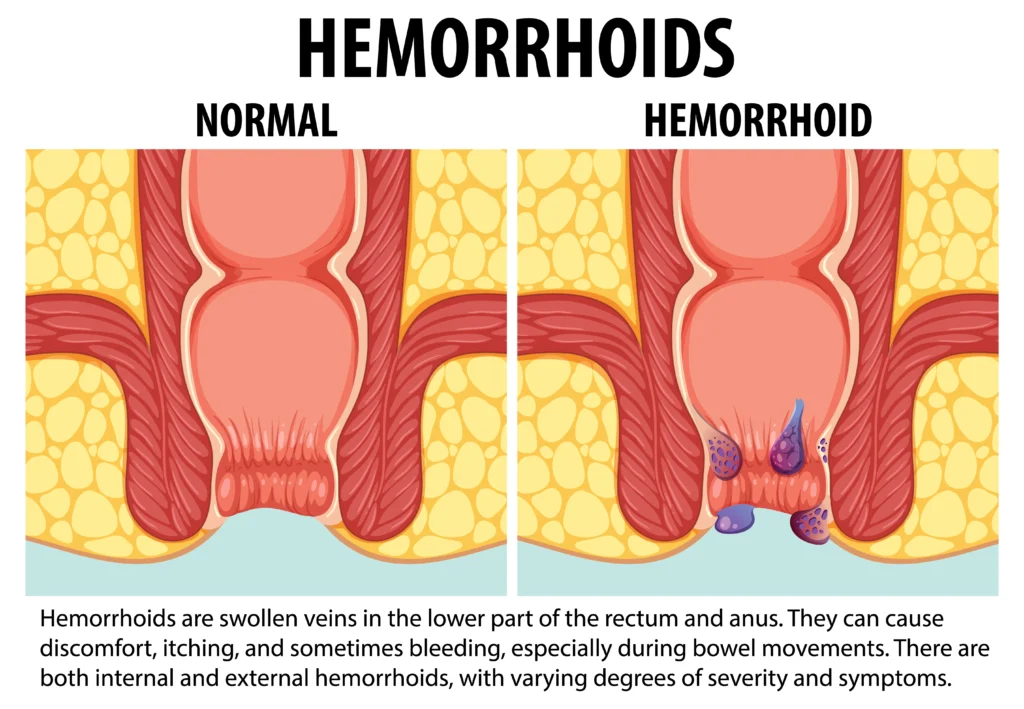
Bowel movement patterns can provide valuable clues in distinguishing whether symptoms are due to hemorrhoids or uterine fibroids, as each condition affects bowel habits differently.
| Feature | Hemorrhoids | Uterine Fibroids |
| Relationship to bowel movement | Symptoms worsen during/after defecation | Symptoms (pressure, fullness) often constant |
| Bleeding | Bright red, with stool or wiping | Rare, unless secondary hemorrhoids develop |
| Constipation | Often due to dietary habits, straining | Due to mechanical pressure on rectum/colon |
| Feeling of incomplete evacuation | Common with both, but in fibroids, persistent | Common, especially with large posterior fibroids |
| Anal symptoms (itching, swelling) | Common | Uncommon |
| Associated menstrual symptoms | Absent | Present (heavy bleeding, cramps, etc.) |
Suppose a patient’s constipation or rectal pressure is persistent, not relieved by typical hemorrhoid treatments, and accompanied by pelvic symptoms or heavy menstrual bleeding. In that case, uterine fibroids are more likely to be the underlying cause. In contrast, hemorrhoidal symptoms are closely tied to bowel habits and are often relieved with dietary changes, stool softeners, or topical treatments.

Yes, both conditions can cause symptoms like pelvic or rectal pressure and constipation, making it hard to differentiate without medical evaluation.
No, fibroids usually cause heavy menstrual bleeding, while hemorrhoids cause rectal bleeding. However, both can occur together in some cases.
Indirectly, yes. Large fibroids can cause chronic constipation, which increases the risk of developing hemorrhoids due to straining.
A pelvic ultrasound helps diagnose fibroids, while hemorrhoids are usually confirmed through a physical or rectal exam. Consult a specialist for an accurate diagnosis.
You should consult a gynecologist. Dr. Saima Javed, the best lady gynecologist in Kolkata, can help you diagnose and manage uterine fibroids effectively.
At my clinic in Kolkata, we provide:
Being recognized as the best lady gynecologist in Kolkata, my goal is to offer accurate diagnosis, empathetic listening, and effective treatment plans for every woman walking through our doors.
Though uterine fibroids and hemorrhoids are distinct medical conditions, they can cause similar symptoms such as constipation, pelvic or rectal pressure, and even bleeding. Accurate diagnosis is crucial to ensure you receive the right treatment at the right time.
If you’re unsure about the cause of your symptoms, don’t hesitate. Book a consultation with Dr. Saima Javed, the best lady gynecologist in Kolkata, for expert evaluation and guidance.